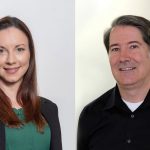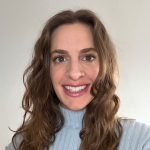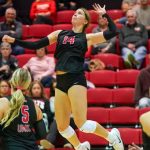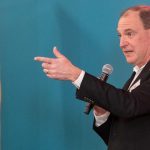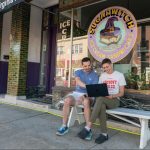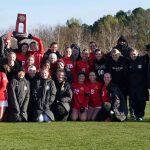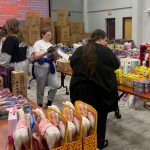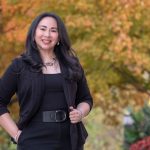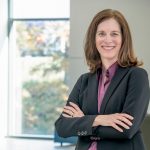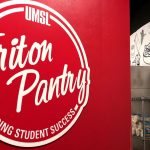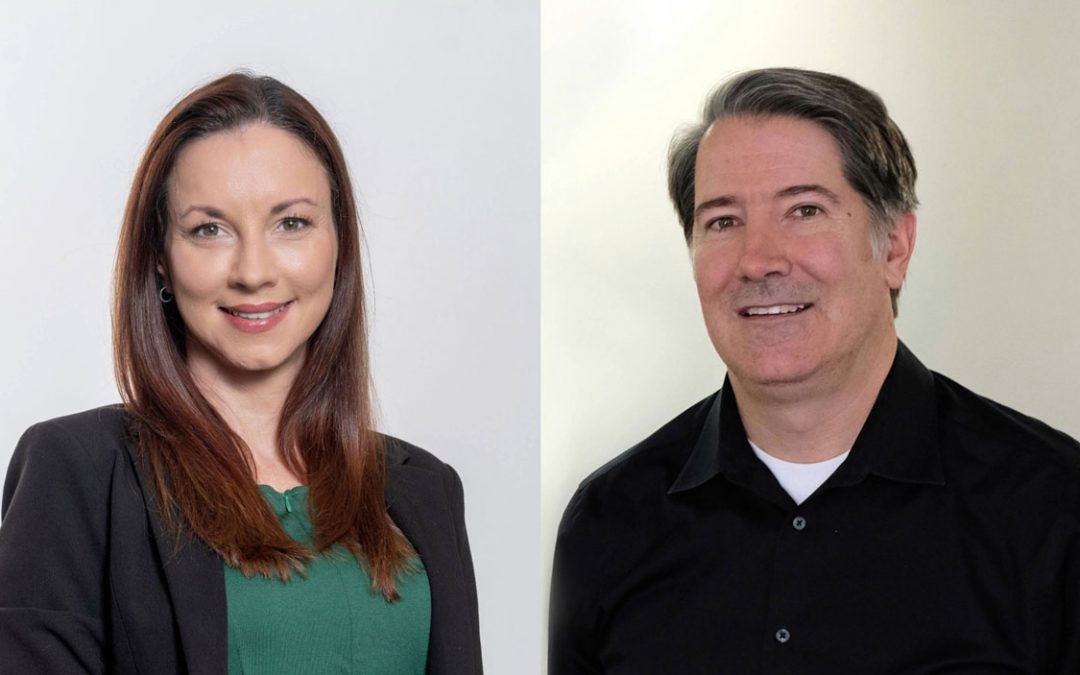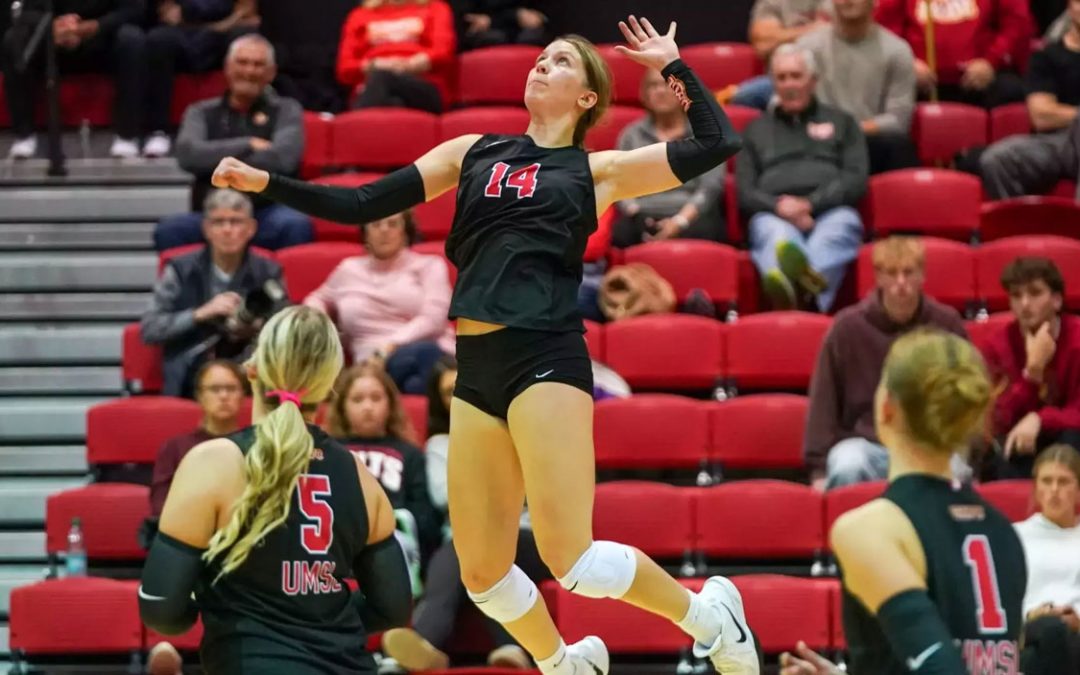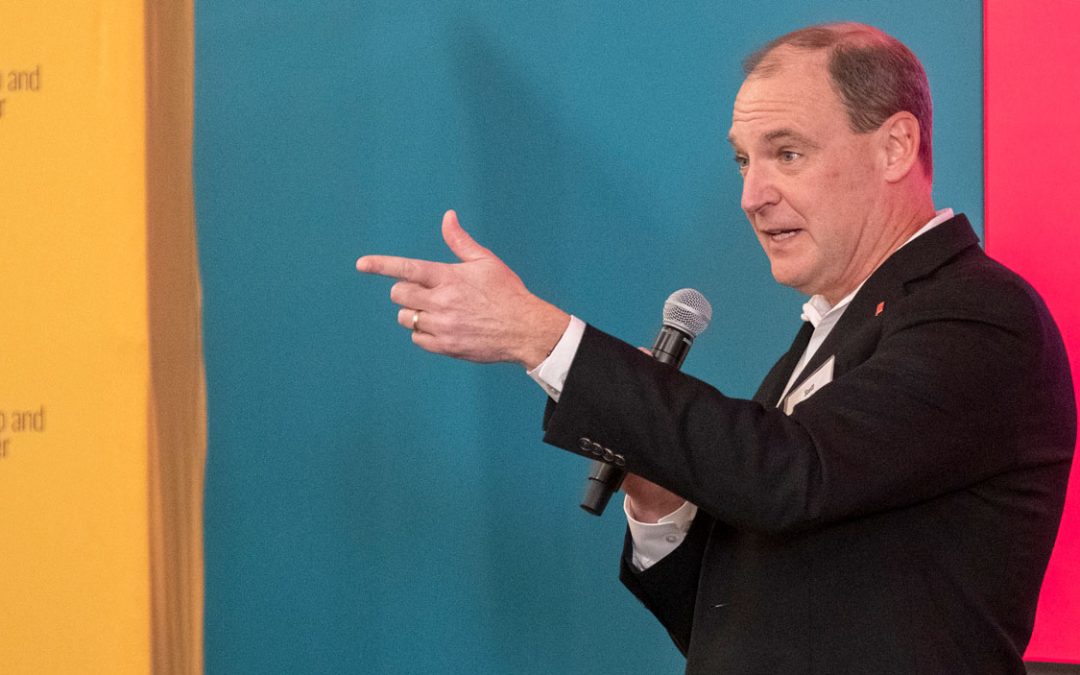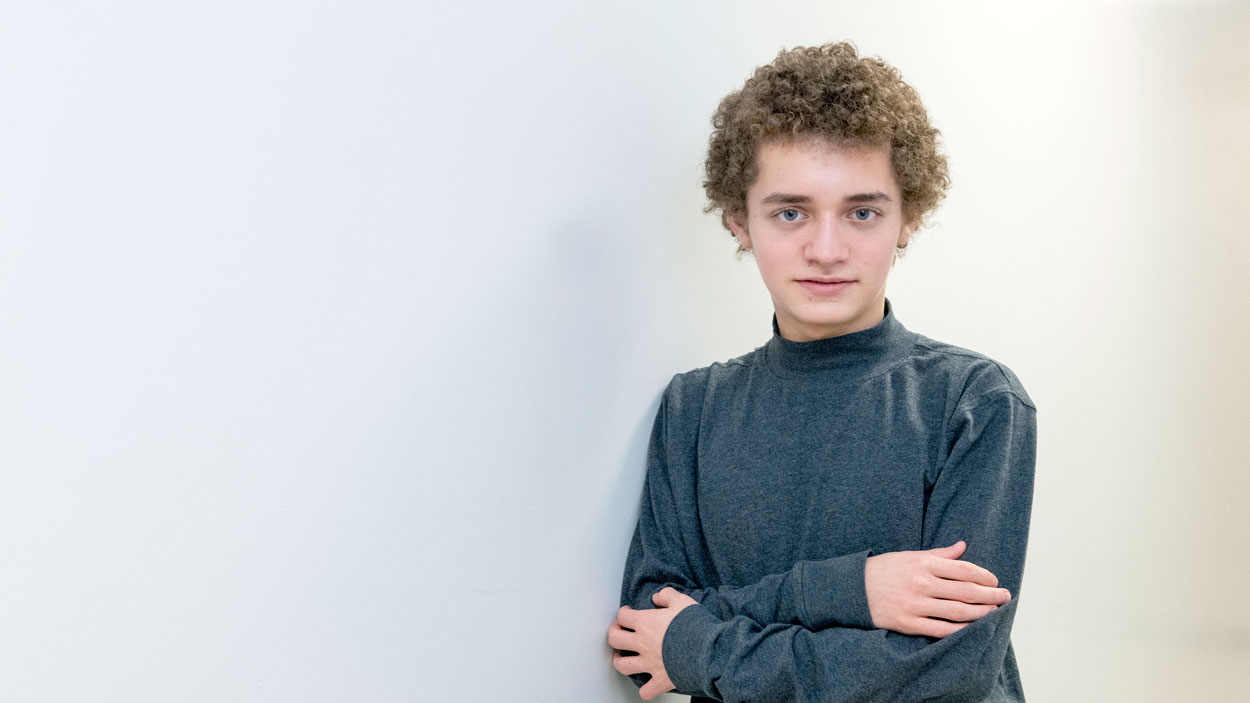
Yosef Granillo is studying computer science as a 15-year-old freshman at the University of Missouri–St. Louis. (Photos by Derik Holtmann)
At about 3 p.m. on a recent Thursday, right around the time a typical 15-year-old might be waiting to get picked up from school or getting ready for sports practice or another after-school activity, Yosef Granillo was sitting in a third-floor office in Express Scripts Hall at the University of Missouri–St. Louis.
He had his laptop open on the table in front of him. Badri Adhikari, an associate professor of computer science, sat to Granillo’s left, and they were going page-by-page through a draft of a research paper Granillo’s working on titled “Progress in Deep Learning of Protein Structure Prediction – An Interpretability Perspective.” Adhikari offered some suggestions about a way to structure one section of the paper, and the two discussed potential changes.
Granillo has been conducting research with guidance from Adhikari since last fall when he enrolled at UMSL as a 14-year-old studying computer science.
“I like doing research, and if I start research now, I can specialize myself early – start getting into something that I could pursue later even further,” he said. “It’s a good way to get acquainted with the field. It’s a much different experience than just going to class, a different level of learning.”
Granillo’s goal is to graduate from college into an MD-PhD program. His aim is to one day do work at the intersection of medicine – particularly neurology – and computer science to try to address large-scale health problems.
“You treat people as a clinician, but the big picture can lead to new innovation,” Granillo said. “It can solve the problems. It can lead to a cure for diseases, rather than just a treatment.”
Quick study
Granillo, who born in Arizona and moved to St. Louis before his third birthday, has always been advanced. He remembers his mother, Carole, taking him to get his IQ tested at a young age.
“I don’t remember the exact results, but I know it was good,” he said. “My parents have just always pushed me to go further, pursue opportunities, just be good academically. They pushed me toward higher classes quicker.”
His math skills were especially strong. He was studying pre-algebra by the time he was 7 or 8, then algebra, and he later took courses in the art of problem-solving, number theory, counting, probability and geometry.
Granillo attended the Academy of Innovation at Remington in the Pattonville School District as part of the St. Louis Regional Program for Exceptionally Gifted Students. In 2019, he won first place in the St. Louis County Library’s Write Stuff creative writing competition in the 3rd-5th grade category. The same year, he was also named a finalist in the 3M Young Scientist Challenge.
During the COVID-19 pandemic, his parents began homeschooling him, and with online learning opportunities, he was able to move even further ahead in his education.
Last year, as he was completing his high school curriculum, Granillo was named a National Merit Scholarship recipient, receiving a $2,500 yearly award for four years to the college of his choice.
Still just 14, Granillo wasn’t ready to leave home and be out on his own. Instead, his family decided to enroll him at UMSL, an easy 15-minute drive from his house.
The university wasn’t completely foreign to them. In 2022, Granillo took part in UMSL’s Students and Teachers As Research Scientists – or STARS – program, conducting research with Saint Louis University faculty member Jeff Ma on the application of machine learning techniques to correct inaccuracies in welding. He also coordinated with a writing mentor at UMSL when producing a paper outlining his research findings.
“The overall program was good,” he said. “I learned a lot about how to do research, how to get sources, synthesize the information, formally put something down.”
Deeper learning
Granillo took 12 credit hours in his first semester and made sure that included the opportunity to conduct research. He sought out Adhikari because of his work in artificial intelligence, health informatics and bioinformatics.
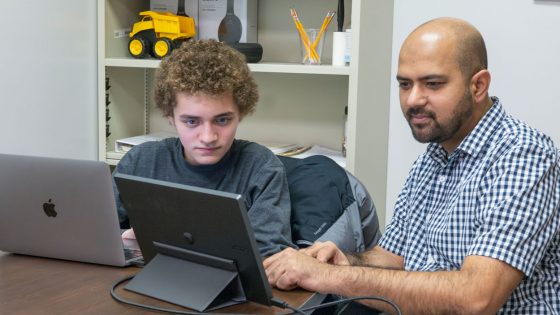
Yosef Granillo and Associate Professor Badri Adhikari discuss edits to a research paper titled “Progress in Deep Learning of Protein Structure Prediction – An Interpretability Perspective” during a recent meeting in Adhikari’s office.
Adhikari believes Granillo’s involvement in research has already added to his learning.
“The way high school and college prepares students to move forward is to excel in a structured environment,” Adhikari said. “Teachers give you assignments and deadlines, you complete them, and there’s very clear instructions in assignments as to what to do and what not to do. He has proven his ability in such structured settings.
“Research is different from that perspective, because it’s unstructured. You are seeking an answer to an open question.”
Specifically, they’ve been studying how deep learning networks such as AlphaFold 2 and AlphaFold 3 have been reliably and accurately predicting the structure of proteins from their amino acid sequences.
“Applications of theories in chemistry and physics have not been able to solve this protein folding problem,” Granillo said. “They are not able to take an amino acid sequence and turn it into a protein structure that is consistent with experimentally determined data, but these deep learning networks have been able to take a sequence and turn it into a protein structure. If we can interpret these predictions, if we can understand what the deep learning networks are learning – what principles from physics and chemistry they’re applying – that could lead to an actual scientific theory of protein folding – a solution to this problem.”
That could lead to better understanding of mutations of proteins and advances in protein design, both of which could have important medical applications.
“The project that we are working on is a very, very difficult one,” said Adhikari, who has been impressed with Granillo’s level of understanding. “When we started working on the project in the fall, I assigned him to read a few papers, particularly papers on the topic of protein structure prediction. He was reading papers from several authors, including David Baker from University of Washington and John Jumper and Demis Hassabis from DeepMind. Toward the end of the fall, these scientists received the Nobel Prize in chemistry. So, Yosef was familiar with the names of those people when they received the Nobel Prize because he was already reading their papers. That was very exciting and validation that the problem that we were working on is an important one.”
Unknown potential
Granillo has demonstrated maturity and focus as he navigates a schedule that this semester has him taking 15 credit hours – including general chemistry, courses in data structures and object-oriented programming and a first-year writing course.
His is not the typical college experience. He uses Uber to get back and forth to campus for class and seldom lingers when he and Adhikari aren’t meeting.
Adhikari hopes to help facilitate a few more interactions for Granillo with other students, but it’s also true college coursework and research are not the only demands on his time.
He’s been playing violin since he was 3½ and has spent the past three years as a member of the St. Louis Symphony Youth Orchestra after previously playing with the Webster Community Music School Young People’s Symphony Orchestra, the Young People’s Concert Orchestra and the Alton Youth Symphony Orchestra. He also swims recreationally and is involved in Israeli Scouts.
“I’m getting older now, so soon I’ll be able to start having more responsibility,” he said.
Last semester, Granillo began volunteering as a coach for children with neurodevelopmental disabilities at KEEN St. Louis. He also volunteered as a tutor in math and computer skills at Women In Charge, an adult education program that provides classes for women looking to earn their high school equivalency.
“He does lots of things,” Adhikari said. “I think his mom and others have helped him a lot, but he manages his time really well.”
Granillo wants to get far enough in his research this semester to submit a proposal to the BioNexus Informatics Conference in Kansas City in April, and he’d also like to present at UMSL’s Undergraduate Research Symposium later that month.
Adhikari believes the real payoff for his research work will be further in the future.
“I think the training that he’s getting right now is important,” Adhikari said. “He’s receiving training to explore independently, think openly, critique other researchers’ work. That will really help him go from where he’s at to becoming a true scholar, and I think that’s where we will see even more of his potential and abilities.”


